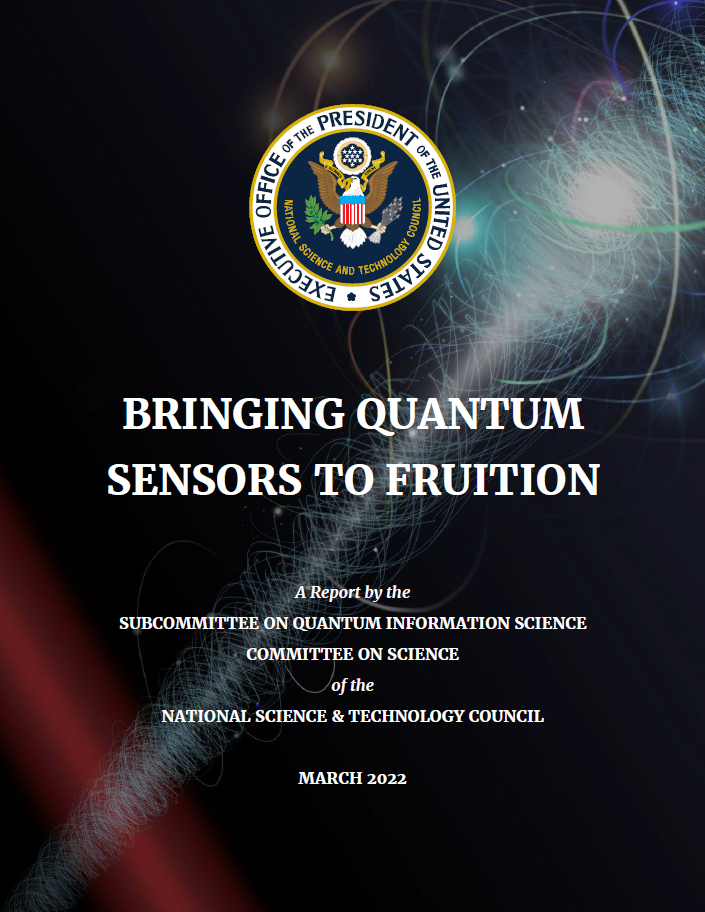 |
Bringing Quantum Sensors to FruitionAuthor(s): Subcommittee on QIS; Committee on Science; National Science & Technology Council Publication Type: Strategy Documents View Full Text: https://www.quantum.gov/wp-content/uploads/2022/03/BringingQuantumSensorstoFruition.pdf Executive Summary: Quantum sensors can offer improved accuracy, stability, sensitivity, and precision over traditional technologies. The realization of new quantum sensors is a tangible, near-term objective of the National Quantum Initiative. This document recommends actions that U.S. Departments and Agencies can take to coordinate research and development and facilitate fruitful applications of quantum sensor technologies. |
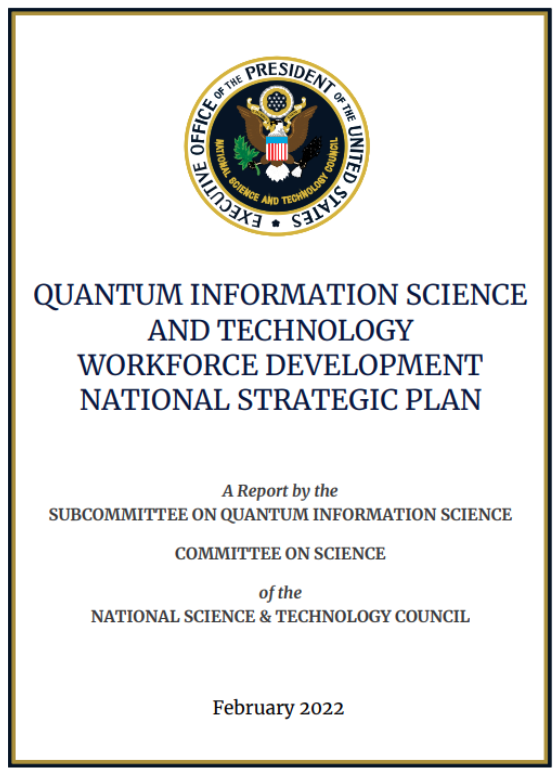 |
QIST Workforce Development National Strategic PlanAuthor(s): Subcommittee on QIS; Committee on Science; National Science & Technology Council Publication Type: Strategy Documents View Full Text: https://www.quantum.gov/wp-content/uploads/2022/02/QIST-Natl-Workforce-Plan.pdf Executive Summary: Workforce development in Quantum Information Science and Technology (QIST) is a priority for the United States as part of the National Quantum Initiative. To ensure economic and national security, several actions are recommended here to evaluate the QIST workforce landscape, prepare more people for jobs with quantum technology, enhance STEM education at all levels, accelerate exploration of quantum frontiers, and expand the talent pool for industries of the future. |
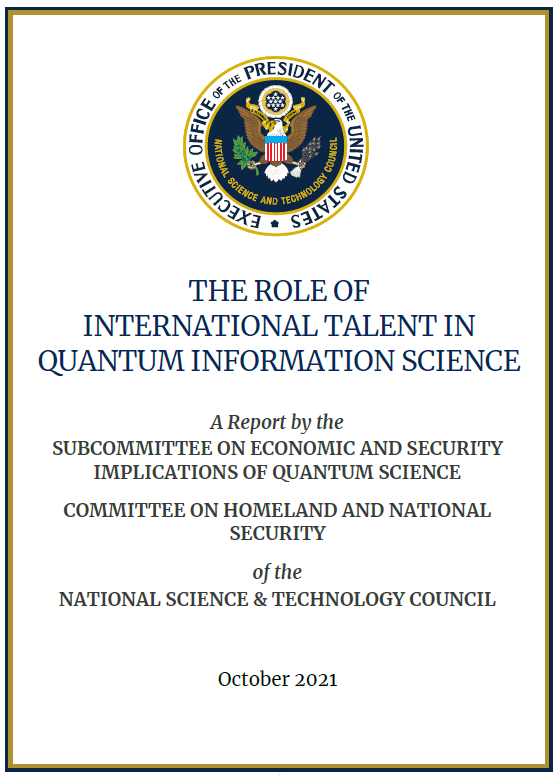 |
The Role of International Talent in Quantum Information ScienceAuthor(s): Subcommittee on Economic and Security Implications of Quantum Science; Committee on Homeland and National Security; National Science & Technology Council Publication Type: Strategy Documents View Full Text: https://www.quantum.gov/wp-content/uploads/2021/10/2021_NSTC_ESIX_INTL_TALENT_QIS.pdf Executive Summary: This report highlights the critical role that international talent plays in ensuring a vibrant and successful U.S. research enterprise in QIST, including the importance of close collaboration with foreign partners, while also stressing the importance of protecting the technology and expertise of the United States and our international partners. It finds that maintaining a strong flow of international students and researchers is an essential component to developing the expert QIST workforce required to achieve U.S. QIST goals as part of an advancing global research enterprise. |
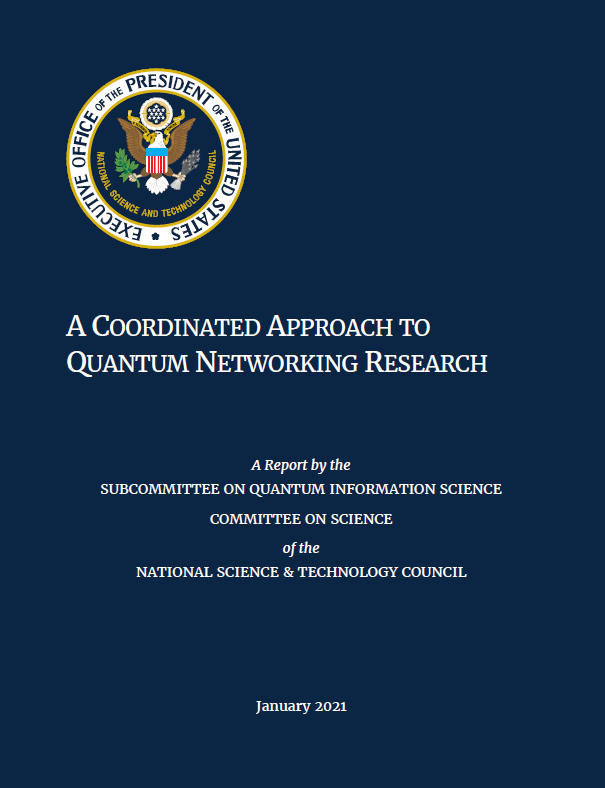 |
A Coordinated Approach to Quantum Networking ResearchAuthor(s): Subcommittee on QIS; Committee on Science; National Science & Technology Council Publication Type: Strategy Documents View Full Text: https://www.quantum.gov/wp-content/uploads/2021/01/A-Coordinated-Approach-to-Quantum-Networking.pdf Executive Summary: A coordinated approach to quantum networking research that leverages the unique strengths of several Federal agencies will accelerate the science and engineering necessary to develop useful quantum network components and applications. Recognizing the growing number of significant efforts on quantum networking research, this report recommends actions Federal agencies can take together to advance the Nation’s knowledge base and readiness to utilize quantum networks. |
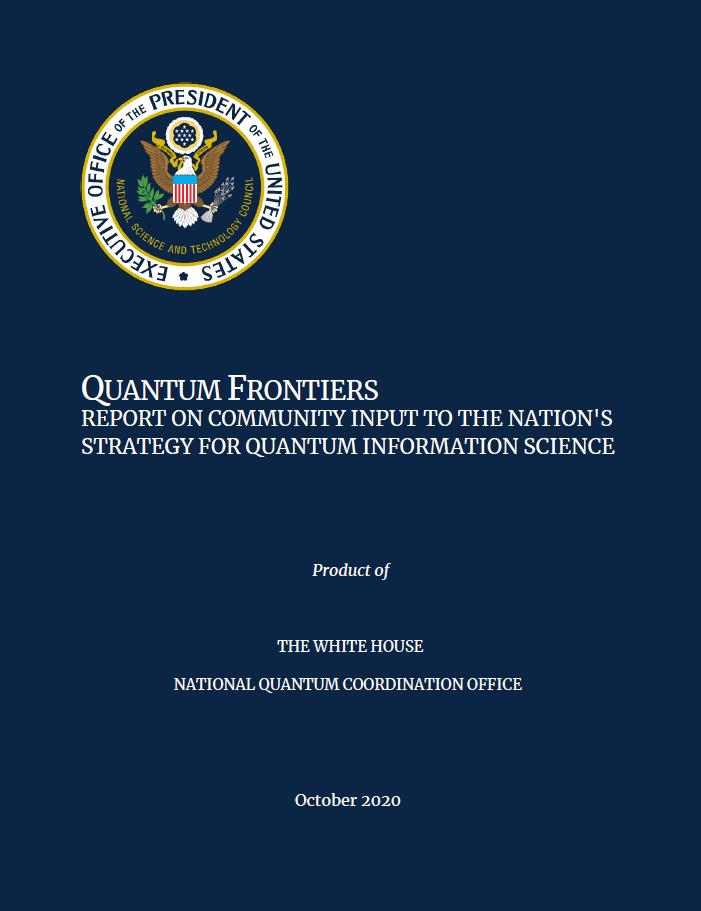 |
Quantum Frontiers ReportAuthor(s): The White House; National Quantum Coordination Office Publication Type: Strategy Documents View Full Text: https://www.quantum.gov/wp-content/uploads/2020/10/QuantumFrontiers.pdf Executive Summary: Quantum Frontiers are areas to explore where solutions to grand challenges can lead to transformative advances in quantum information science, engineering, and technology. With input from the QIS R&D community, the NQCO identified eight quantum frontiers. These are elaborated upon in the Quantum Frontiers Report which cites community responses to the public request for information regarding the National Strategic Overview for QIS. Also cited are three dozen scientific and technical reports from federally funded QIS workshops, roundtables, and studies. These reports can be found in the quantum.gov publication library here. |
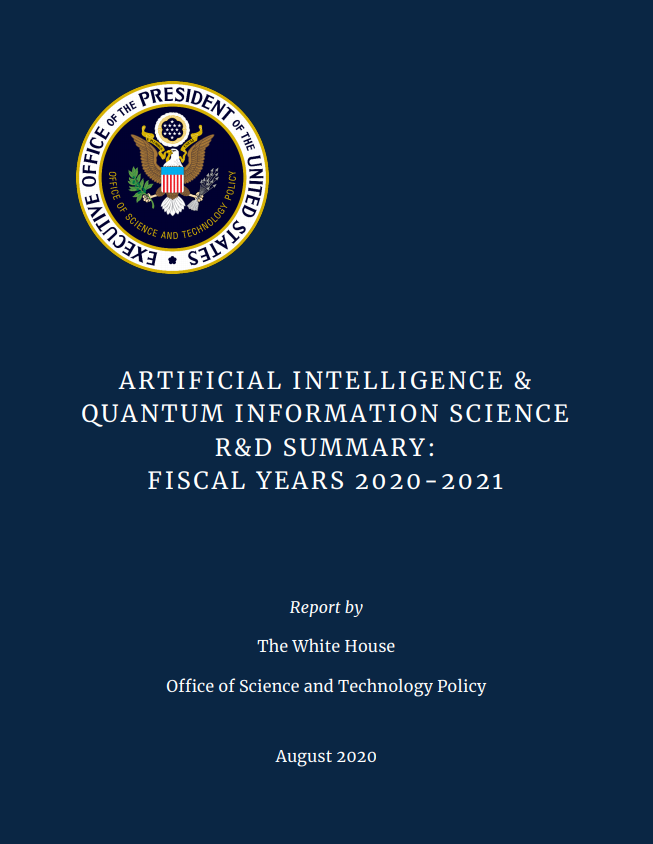 |
Artificial Intelligence and Quantum Information Science Research and Development Summary: Fiscal Years 2020 – 2021Author(s): The White House; Office of Science and Technology Policy Publication Type: Strategy Documents View Full Text: https://trumpwhitehouse.archives.gov/wp-content/uploads/2017/12/Artificial-Intelligence-Quantum-Information-Science-R-D-Summary-August-2020.pdf Executive Summary: Artificial intelligence (AI) and quantum information science (QIS) are key industries of the future that will power economic growth and strengthen national security for years to come. The Trump Administration recognizes the strategic importance of these emerging technologies and has taken decisive action to advance America’s AI and QIS leadership. In February 2020, President Trump’s Fiscal Year (FY) 2021 Budget put the United States on a path to double Federal research and development (R&D) spending in nondefense AI and QIS by FY2022. This report provides a summary of Federal R&D spending in nondefense artificial intelligence and quantum information science for Fiscal Years 2020 – 2021. It demonstrates that the Administration is well on its way to fulfilling the President’s request to double investment. |
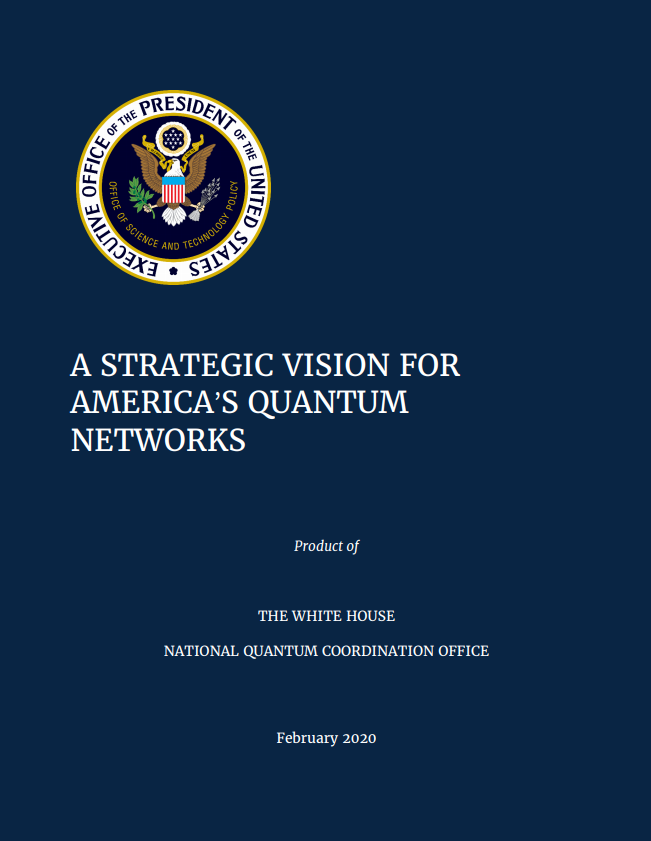 |
A Strategic Vision for America’s Quantum NetworksAuthor(s): The White House; National Quantum Coordination Office Publication Type: Strategy Documents View Full Text: https://www.quantum.gov/wp-content/uploads/2021/01/A-Strategic-Vision-for-Americas-Quantum-Networks-Feb-2020.pdf Executive Summary: Quantum computing and networking technologies are still at an early stage of research and development (R&D). The strategic vision focuses America’s R&D efforts to advance the development of foundations for the quantum internet. It establishes QIS community goals for quantum networking, and recommends six specific technical areas for focused research activity. This strategic vision is driven by the National Quantum Initiative Act (NQIA), signed into law by President Trump in December 2018, to accelerate QIS R&D through increased federal investment and coordination. The strategy was developed through the NQIA’s coordinating bodies, the National Quantum Coordination Office (NQCO) and the National Science and Technology Council’s Subcommittee on Quantum Information Science (SCQIS) and reflects deep community input from SCQIS request for information responses of 2018-2019 and from recent workshops hosted by Federal agencies. |
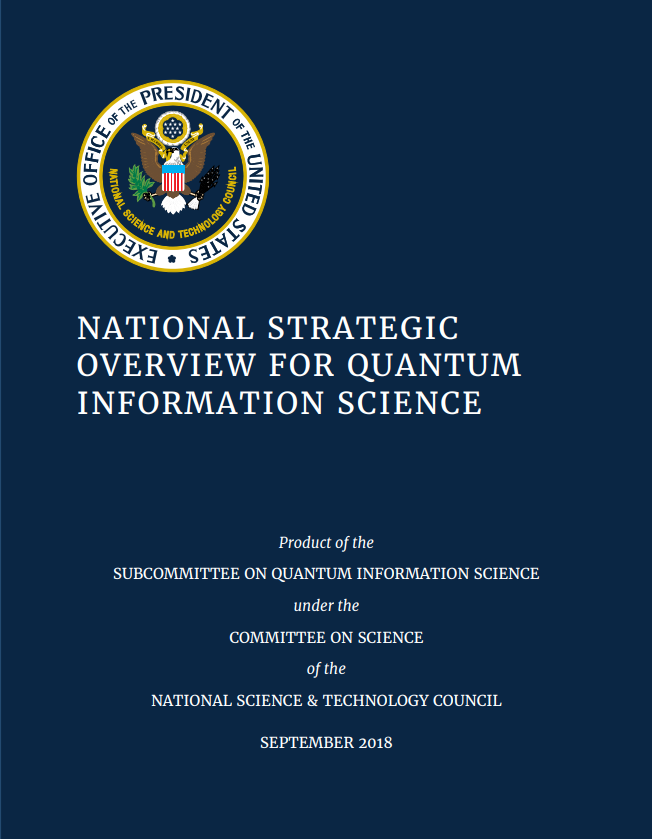 |
National Strategic Overview for Quantum Information ScienceAuthor(s): Subcommittee on Quantum Information Science; Committee on Science; National Science & Technology Council Publication Type: Strategy Documents View Full Text: https://www.quantum.gov/wp-content/uploads/2020/10/2018_NSTC_National_Strategic_Overview_QIS.pdf Executive Summary: This strategic overview was developed through the NSTC SCQIS with additional contributions from member agencies: Department of Agriculture, Department of Defense, Department of Energy, National Institutes of Health, Department of the Interior, Department of Homeland Security, Department of State, National Aeronautics and Space Administration, National Institute of Standards and Technology, National Science Foundation, National Security Agency, Office of the Director of National Intelligence, Office of Management and Budget, and Office of Science and Technology Policy. |
An extensive list of QIS Related Publications can be found here

